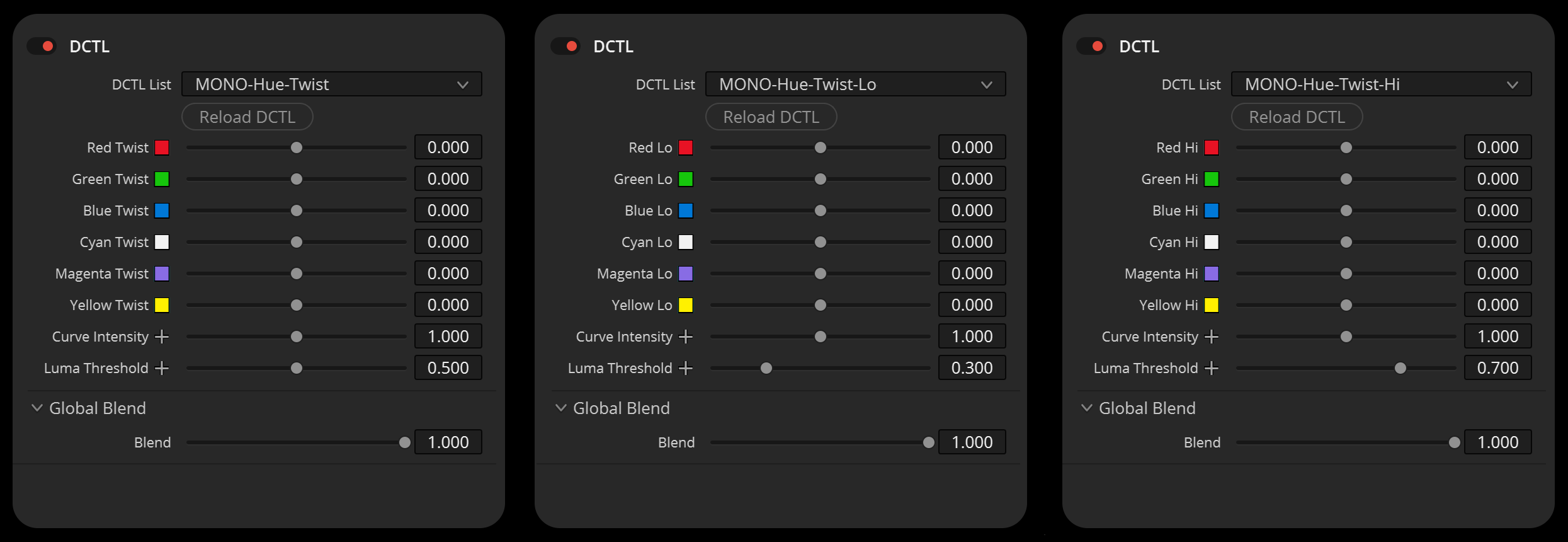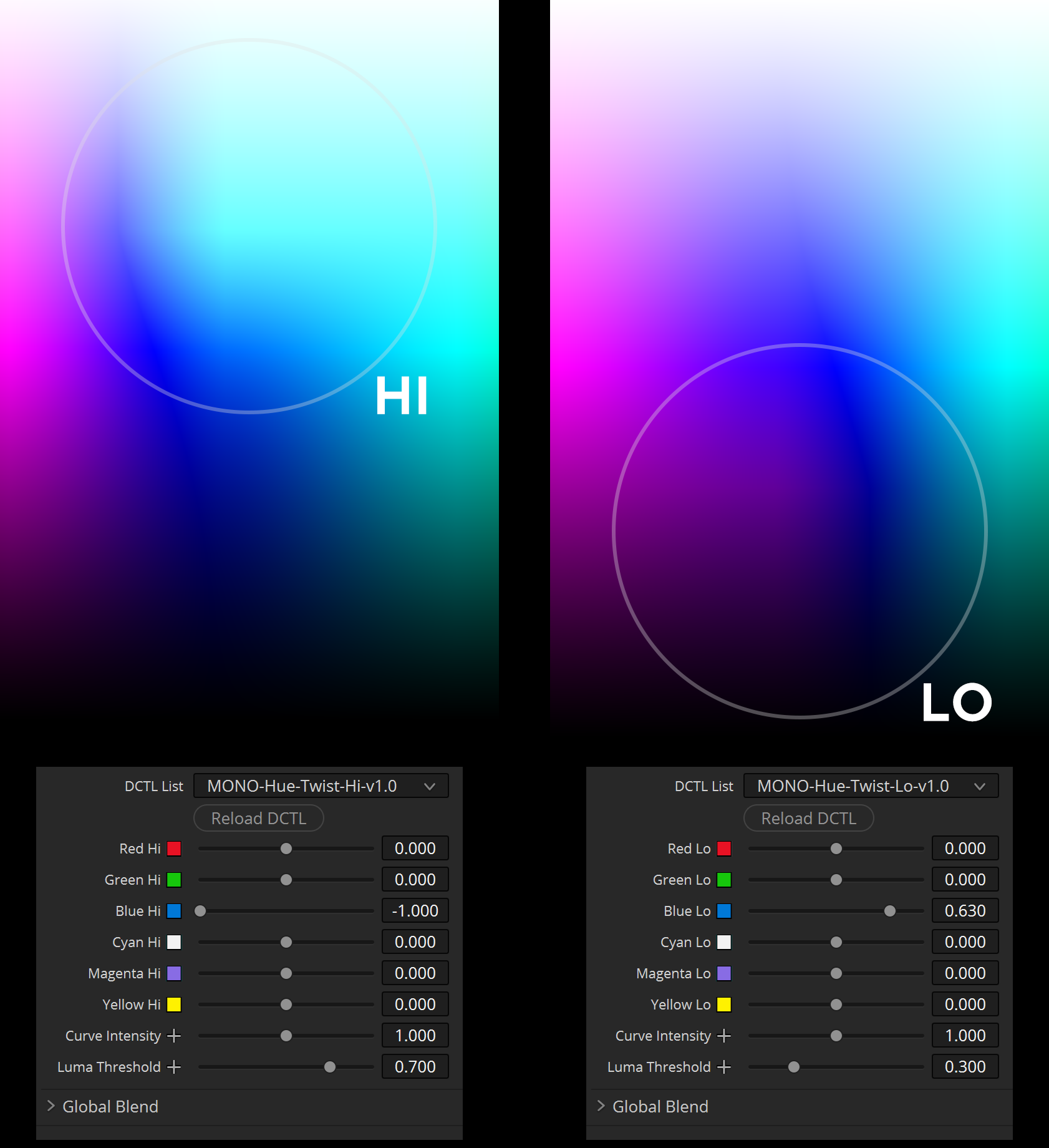HUE TWIST DCTL
LOOK DEVELOPMENT TOOL
INTRODUCTION
The “Hue Twist” DCTL works by ‘twisting’ hue values towards their neighboring colors, but the interesting aspect here is that it does so based on the brightness value of the respective hue. Darker areas are automatically shifted towards the opposite adjacent hue value than lighter areas, adding a depth of complexity to the color manipulation process that goes beyond standard hue shift methods.
Additionally, the tool offers flexibility in determining the brightness threshold and the intensity of the transition between bright and dark regions. This added control ensures users have a broad and tailored manipulation of the image.
Overall, the Hue Twist DCTL is a precise color grading tool, providing a new approach to adjusting color hues by adding brightness as a determining factor, therefore expanding the creative possibilities in color grading.
HUE TWIST
The “Hue Twist” DCTL modifies hues towards neighboring colors based on their brightness, resulting in darker areas shifting towards the opposite adjacent hue compared to lighter areas.
LO
The “Hue Twist Lo” DCTL tweaks hues in darker areas towards adjacent colors, leaving lighter areas untouched.
HI
The “Hue Twist Hi” DCTL tweaks hues in lighter areas towards adjacent colors, leaving darker areas untouched.
EXAMPLES
In the first example, I am shifting the shadow area of the blue value more towards magenta, which will simultaneously shift the blue highlights more towards cyan.
In the second example, I do the exact opposite. I am shifting the shadow area towards cyan, which will simultaneously shift the blue highlights more towards magenta.

Cyan in Highlights / Magenta in Shadows
Magenta in Highlights / Cyan in Shadows
FILM PRINT MATCHING
With the “Hue Twist” DCTL, you can replicate certain characteristics of Print Film LUTs, such as the popular Kodak 2383. This tool enables precise color adjustments, capturing the subtle nuances associated with different film stocks.
Notice the tool’s ability to reconstruct the specific green and blue of the Kodak 2383 print LUT. Using the “Hue Twist” DCTL, we can shift the lighter green values more towards cyan while ensuring the darker shades remain within the green spectrum. This process mirrors the unique properties of the LUT.

ORIGINAL
RGB Test Image
KODAK 2383
LUT by DaVinci Resolve
HUE TWIST
By combining “Color Shift” DCTLs, I was able to achieve deep, rich greens. In the following step, I used “Hue Twist” DCTLs to push the highlights more towards cyan.

ORIGINAL
RGB Test Image
KODAK 2383
LUT by DaVinci Resolve
HUE TWIST
By combining “Color Shift” DCTLs, I was able to achieve deep, rich blues. In the following step, I used “Hue Twist” DCTLs to push the highlights more towards cyan.
OVERVIEW
Enhance or minimize the overall hue twist effect by simply adjusting the S-Curve Intensity Slider. Increase the value to create a steeper, ‘harder’ S-Curve. Decrease it to make the curve more linear and subtle. The luma threshold is used to separate the darker parts of the image from the brighter parts.
The “Twist-Hi” DCTL focuses on the brighter regions, allowing you to tweak the hues of highlights. Meanwhile, the “Twist-Lo” DCTL gives you control over the shadow regions, letting you add depth and mood by adjusting hues in the darker areas.







